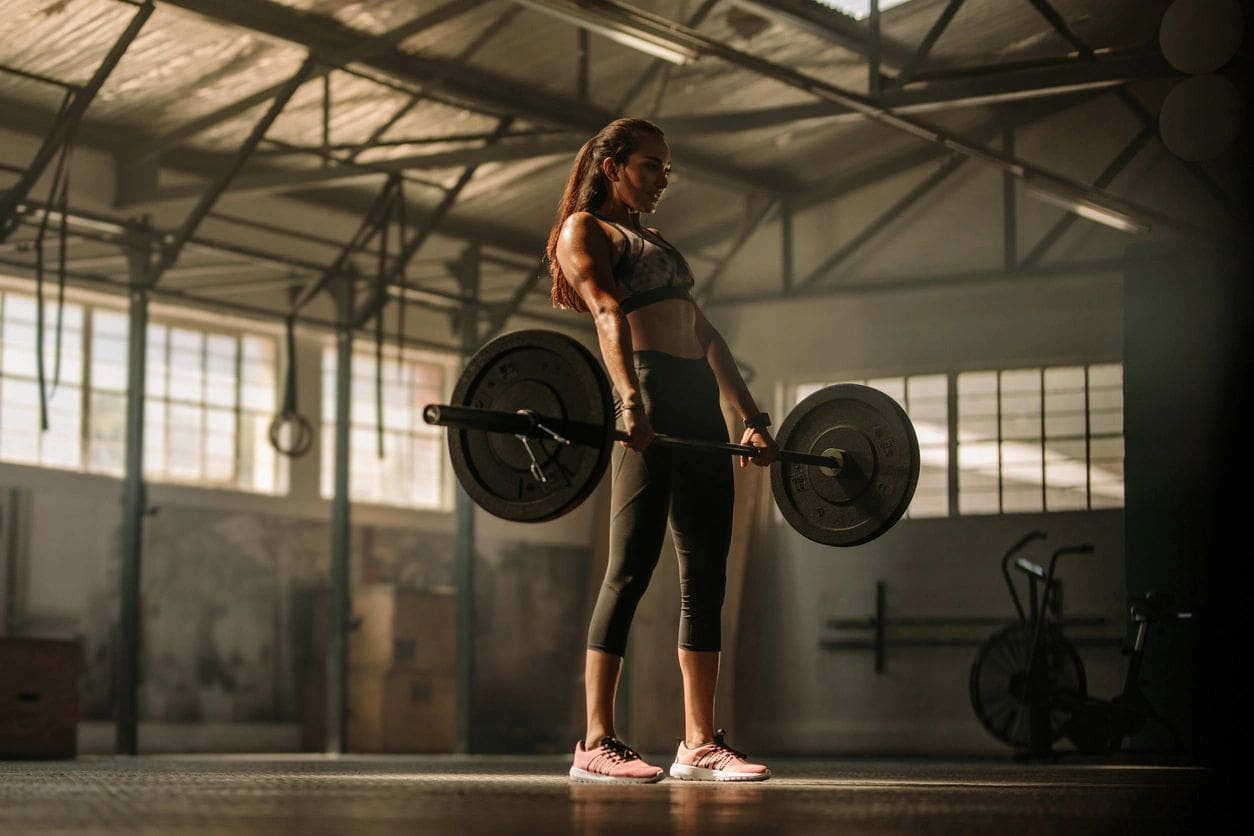
DeadLift: Form and Technique
Purpose:
A deadlift is a functional exercise that has huge carry over with lifting objects. Learning to deadlift properly translates into safe lifting mechanics. It is a great exercise for increasing power with pulling actions and posterior chain engagement.
Muscles involved:
Deadlifting engages almost your entire posterior chain (back of the body). The most important muscles in deadlift include: glutes, hamstrings, traps, and calves.
Technique:
When deadlifting, keep the object close to your shins/close to your body. While keeping a neutral spine, hinge at your hips and let a soft knee bend occur. Stress should be felt in the glutes and hamstrings.
Tips:
- Think of your upper and lower body as two solid pieces that use your hips as a fulcrum.
- Push the buttock back with a soft knee bend to start movement.
- Keep the barbell close to your body throughout the duration of the lift.
Common errors:
- Rounded back: This puts the discs in the low back at risk of injury so maintaining a flat back is important
- Head looking up: When deadlifting, you should maintain a neutral spine by keeping your eyes/head forward
- Weight too far from body: Shift the weight into and back of your foot when lifting to help increase gluteal engagement.
Common Injuries:
- Low back pain: Most common pain/injury with deadlifting
- Prevention: maintaining flat back, tight core, and keeping the barbell close to your body when lifting. Performing additional exercises of the core, hips and scapular muscles can increase strength in those areas and help decrease lower back engagement.
Types of Deadlifts:
- Traditional Deadlift: Form does not change
- Barbell: More effective for improving gross power output
- Dumbbell: increases stability and maintains equal distribution between sides.
- Kettlebell: Using this mode to deadlift lends itself well to improving muscular endurance and incorporating into a HIIT workout.
- RDL (Romanian deadlift):
- Similar to a tradition deadlift but maintaining a straighter leg position throughout movement
- Increases glute and hamstring engagement.
- Usually done slightly lighter weights.
- Single leg deadlift:
- Can be completed with weight in one hand or both hands
- Weight in one hand increases core engagement and single stability
- Weight in both hands: Increases single leg power.
- Can be completed with a toe touch weight bearing to increase weight to further stress your single leg system.
Exercise in conjunction with Deadlifting:
- Hip Stabilizer Exercises-Clamshells, bridging (single and double leg), band walks, side and back lunges
- Core stabilization Exercises-Planks, lower abdominal progressions
- Single Leg Exercises-Single leg balance activities, single leg squats
- Scapular Stabilization Exercises-Rows, lat pull downs
Physical Therapy Intervention:
- A physical therapist (PT) is trained in rehabilitation and movement restoration. A PT will evaluate your movement patterns and perform specific special tests to isolate the reason for your individual movement abnormality. Once isolated, the PT will design a specific program to improve your mobility and strength deficits.
- Physical therapists can facilitate increased motion with mobilizations to various joints while also freeing up soft tissue restrictions with myofascial release. Dry needling is another way a PT can reduce pain and increase range of motion and mobility. Other techniques are utilized to increase muscle activation and strengthen stabilizing muscles that are commonly overlooked at the gym.
- Physical Therapists can help improve form and treat any injury such as back problems that resulted from deadlifting. They can also demonstrate and issue supplemental exercises to improve technique and avoid injury while performing dead lifts.
Contact Us:
If you are experiencing problems as a result from the bench press or just have questions on form and injury prevention, Physical Therapy can help. Please contact the experienced physical therapists at Dynamic Physical Therapy – Chicago and Follow and Like us on Instagram and Facebook. Also, subscribe to our You Tube Channel for the above exercises and many more!
Please call (312) 643-1555 or email info@dynamic-PT.com with any questions or to schedule your consultation today.
